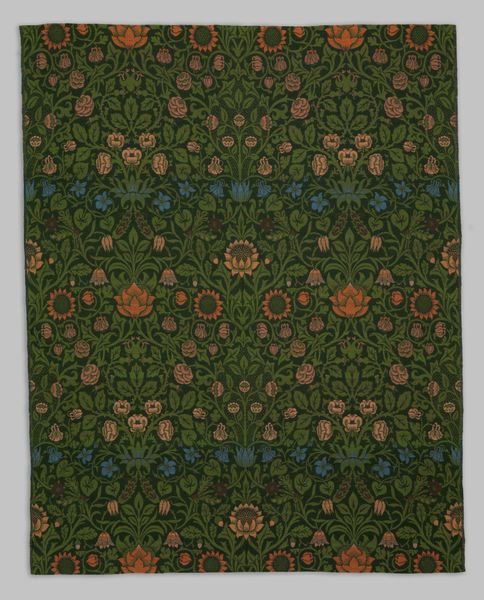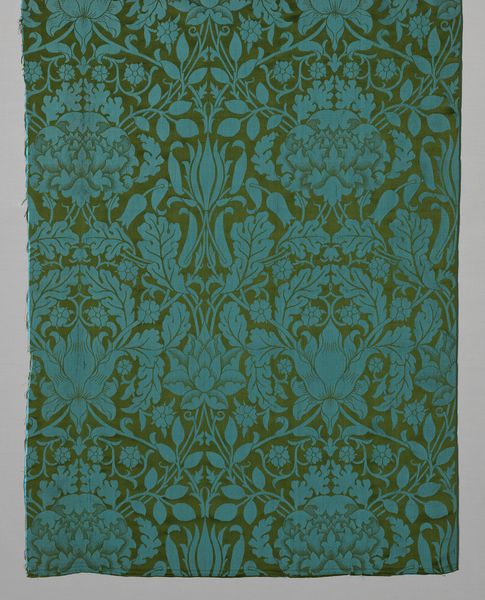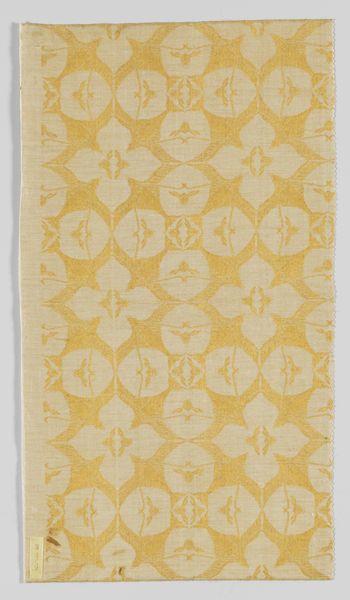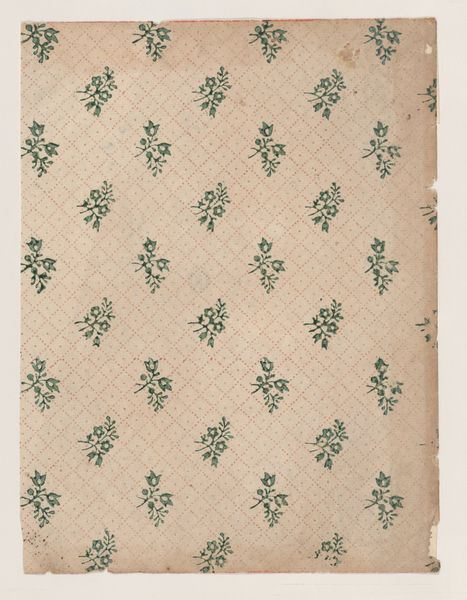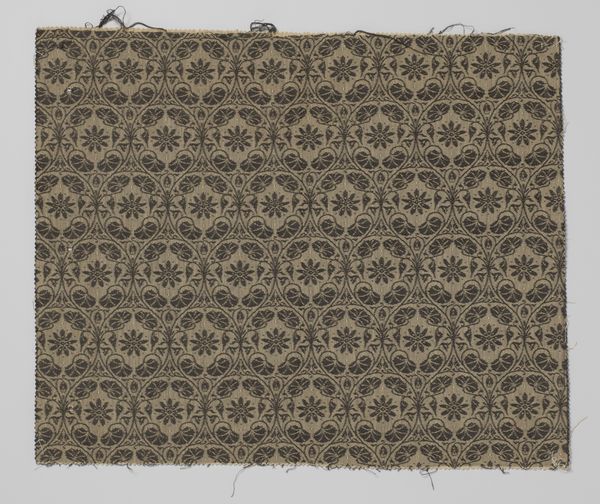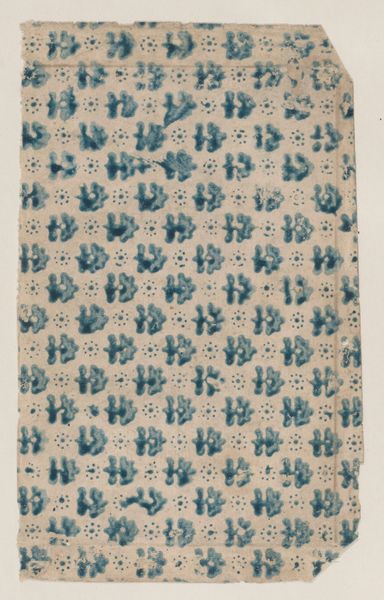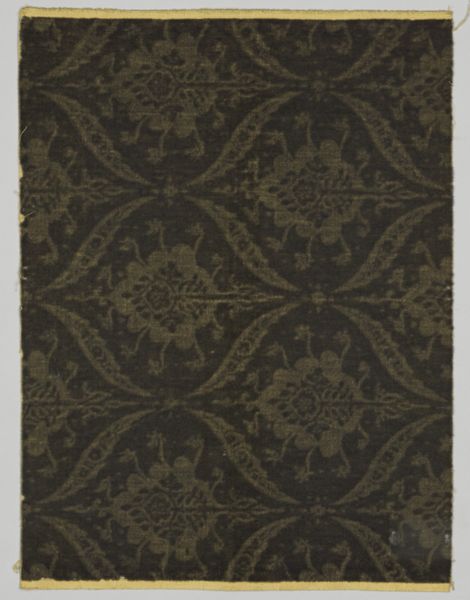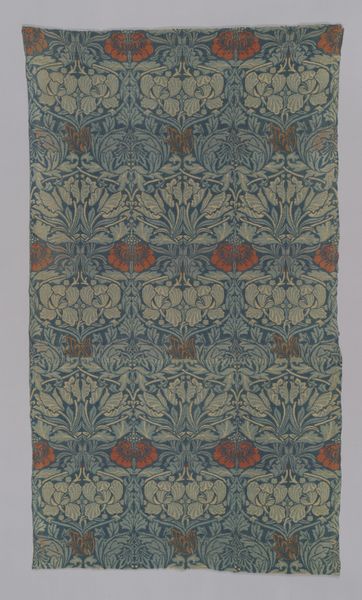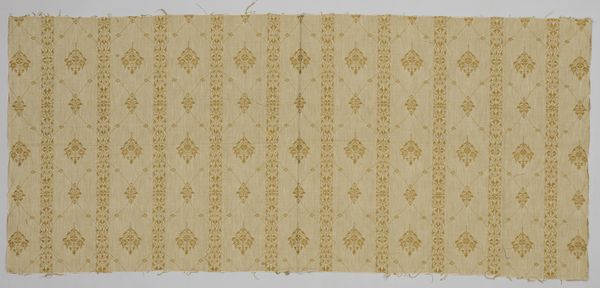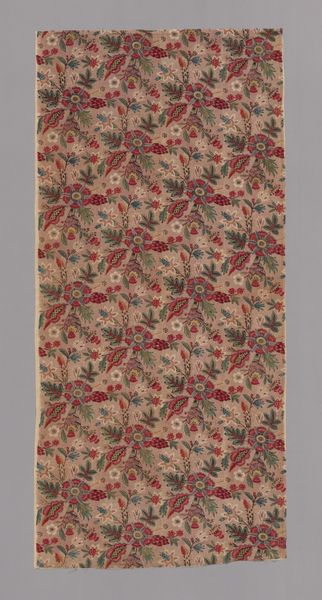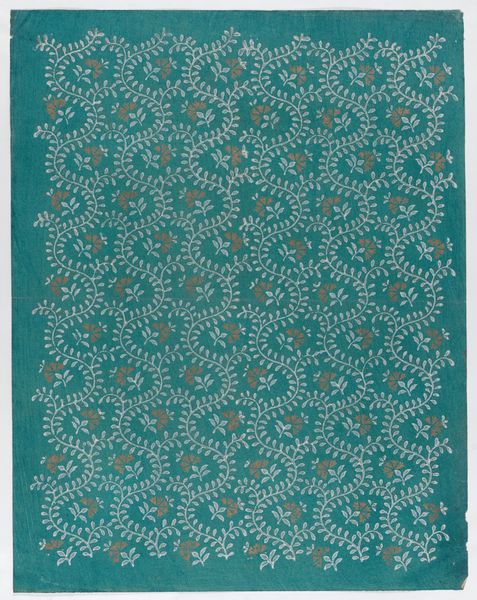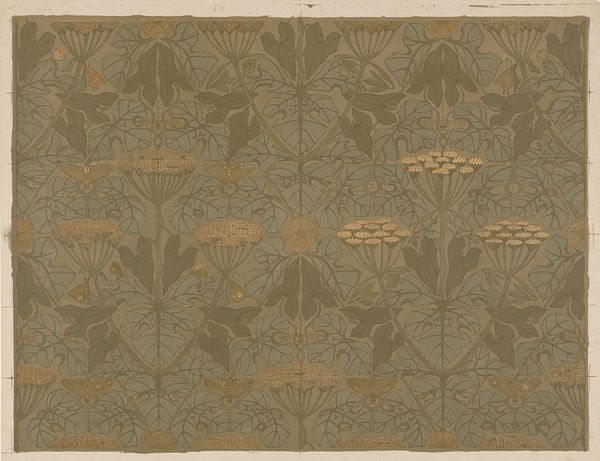
textile
#
arts-&-crafts-movement
#
textile
#
decorative-art
Dimensions: L. 89 3/4 x W. 27 3/4 inches (228 x 70.5 cm)
Copyright: Public Domain
Curator: Let’s turn our attention to “Kennet,” a woven textile crafted in 1883 by the renowned William Morris, now residing here at the Metropolitan Museum. What are your immediate impressions? Editor: My initial reaction is calm, almost meditative. The repetitive floral pattern in muted greens and browns has a soothing, grounding quality. There’s something comforting about its insistence, yet the color scheme isn't visually stimulating. Curator: That sense of comfort speaks volumes, especially when viewed through the lens of the Arts and Crafts movement. Morris, a central figure, was deeply critical of industrialized society and its perceived dehumanizing effects on the workforce and the populace at large. He believed in accessible design for everyone. Editor: Exactly! And "Kennet" embodies that ideal. The even distribution and balance in this symmetrical textile points to a democratization of design, contrasting it against mass-produced ornamentation where details become diluted in the manufacturing process. How did the art market play into these dynamics? Curator: Intriguingly, Morris, through his firm Morris & Co., sought to elevate the status of craftsmanship. Instead of just serving an elite clientele, they envisioned beautiful, well-made objects gracing middle-class homes, thus shaping taste and cultural values beyond just an aristocratic domain. Think about that idea replicated throughout wallpaper designs across the late 19th and early 20th century. Editor: I see a connection here. It goes deeper than accessible aesthetics, however. Looking at textiles such as "Kennet," it almost reads as an encouragement for autonomy in design as opposed to the homogenizing effects of capitalism. It proposes how people’s daily spaces could become personalized experiences for the inhabitants and creators themselves. Curator: It also brought questions of class structure. Labor itself could become elevated through creativity. Instead of focusing exclusively on industry, the handworker was the star in an economic system based around craftsmanship, and its appreciation at all levels of society. Editor: In closing, this design resonates because it merges function with a deep social commentary, highlighting a need for empowerment and equality. Thank you for exploring it with me. Curator: Yes, its historic context provides invaluable lessons. Examining this decorative piece serves as an enlightening meditation of a bygone age where everyday designs stood for reform and optimism.
Comments
No comments
Be the first to comment and join the conversation on the ultimate creative platform.
